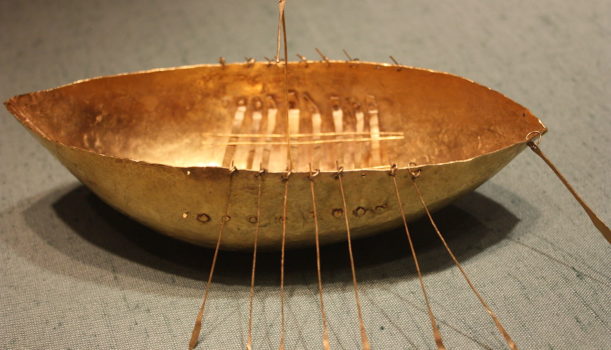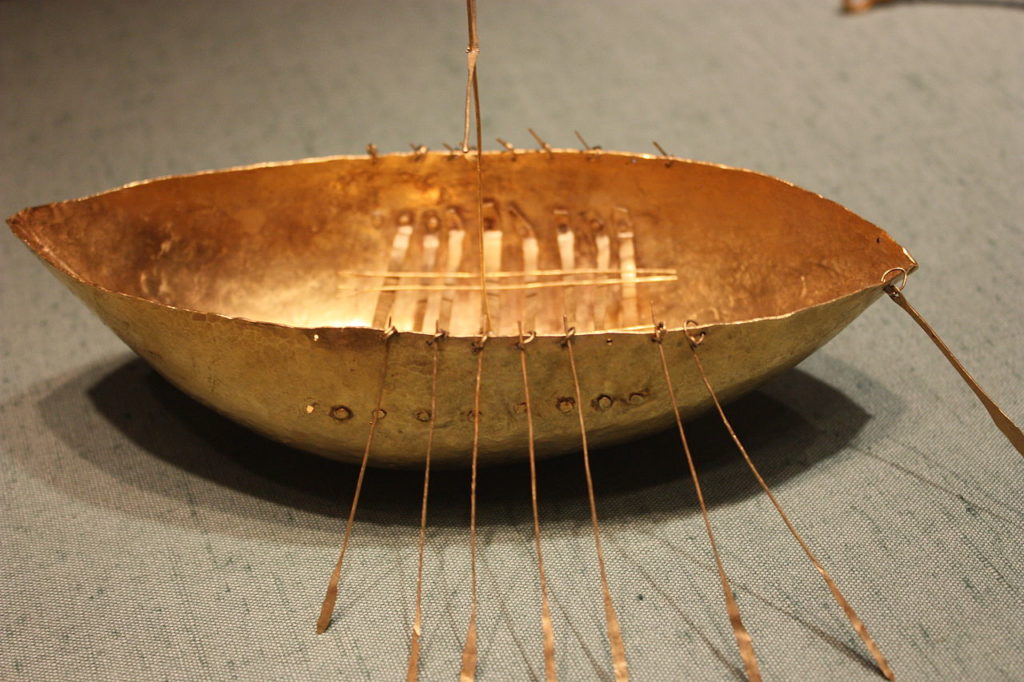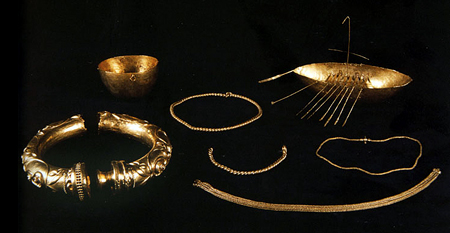In 1896, Tom Nicholl and James Morrow hit something unexpected while double ploughing a field in Broighter, a small town near the coast of Northern Ireland. The objects, which had been buried about 14 inches down, were covered in mud. It wasn’t until after washing them back on the farm that these items were discovered to be of gold and of an important value.
The golden hoard included a boat with intricate tools and accessories, a bowl, a torc, and two chain necklaces. Although the items were damaged, the golden objects were eventually restored to their original beauty and shapes.
The hoard dates back to around the first century BC, and is thought to have been a possible offering to appease an ancient sea god. Currently, after years of dispute with the British Museum, these historical relics are now on display at the National Museum of Ireland.
The Golden Boat captures much attention, as does the Torc, which is described as the ‘finest example of Irish La Tene goldworking‘, by the National Museum of Ireland. Both have made their mark. In 2000, an image of the boat was depicted on the Irish Pound, and each have appeared on Irish stamps.
The boat measures just over 7 inches long by 3 inches wide. It has tiny benches, and two rows of nine oars, with even a paddle rudder for steering! Miniature tools, all of gold, are also part of this incredible vessel. The torc measures 7 and half inches in diameter, and as mentioned, its design is extraordinary.
Who might have buried the items or offered them as an offering remains a mystery today. Nonetheless, it is a joy to see these historical treasures and learn from them what we may.



